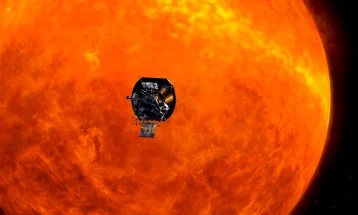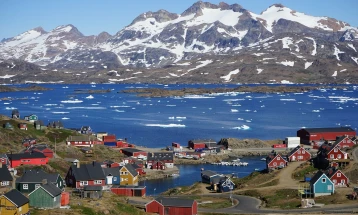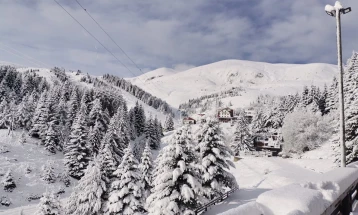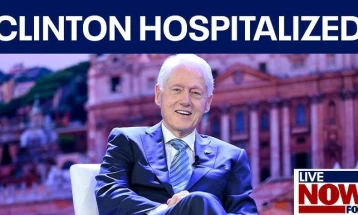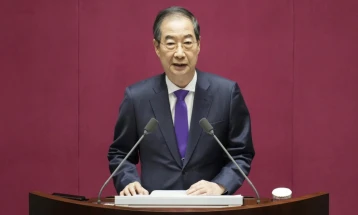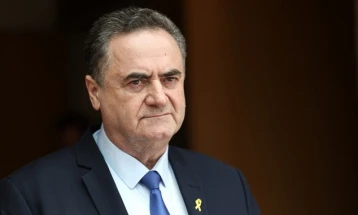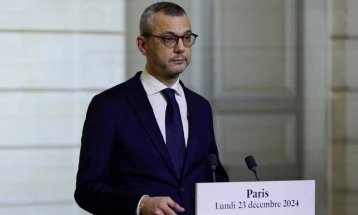NATO to agree biggest defence policy changes since end of Cold War
- Post By Ivan Kolekevski
- 06:51, 29 June, 2022
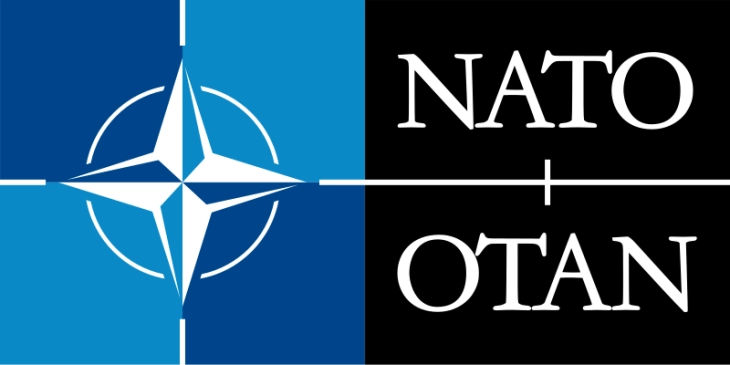
Madrid, 29 June 2022 (dpa/MIA) - NATO leaders are expected to sign off on a major reinforcement of the alliance's Eastern European members on Wednesday when they meet in Madrid to project a united stance amid the Russian invasion of Ukraine.
The decision is a "fundamental shift of deterrence and defence" in the alliance, NATO Secretary General Jens Stoltenberg said as the three-day summit began on Tuesday.
Stoltenberg was echoing previous comments ahead of the summit that described the move as "the biggest overhaul of [NATO's] collective deterrence and defence since the Cold War."
The war in Ukraine has breathed new purpose into the Western alliance after years of internal discord as tensions grew between Europe and the United States under former US president Donald Trump.
French President Emmanuel Macron even remarked in 2019 that NATO was experiencing "brain death" as doubts grew about the alliance's direction over trans-Atlantic tensions.
The chaotic end to the US and NATO's 20-year intervention in Afghanistan helped little until the Ukraine war underlined the alliance's central aim: collective defence.
Russian President Vladimir Putin's invasion of Ukraine has "made even clearer" how important NATO is for the future, Spain's Prime Minister Pedro Sánchez said at the start of the summit.
As well as new confidence, NATO is also attracting new members with Sweden and Finland deciding to abandon neutrality and pursue membership in view of the Russian invasion.
In an early boost to proceedings, Turkey agreed on Tuesday to drop its veto of Sweden and Finland's entry to the alliance after significant pledges from both countries to combat terrorism.
Ankara had opposed both countries entry for weeks, charging both nations with supporting the Kurdistan Workers' Party (PKK) and the YPG, a Kurdish militia based in Syria, both of which Ankara classifies as terrorist groups. Sweden and Finland refuted this.
On Wednesday the trans-Atlantic alliance is set to: agree to preposition more equipment near Russia - including heavy weaponry; boost troop numbers in multinational NATO battlegroups in Eastern Europe; and expand rapid reaction forces from 40,000 to 300,000 soldiers.
The NATO Response Force (NRF) is usually under national command, but can be requested for deployment to another ally by NATO’s Supreme Allied Commander Europe (SACEUR).
NATO allies are still finalizing details of the exact composition of the expanded battlegroups in Eastern Europe, with some alliance members seeking to avoid costly permanent bases.
The Baltics, especially Estonia, have pushed NATO hard to shift tactics in light of the Russian invasion of Ukraine and move to fully-fledged defence of alliance territory in Eastern Europe, replacing a model to relinquish and later recapture lost ground.
The 30-strong Western defensive alliance is to also agree on a new strategic concept outlining NATO's security tasks and missions, the first update since 2010.
The alliance's security blueprint for the next 10 years is expected to categorize Russia as the most direct threat to NATO as well as address China for the first time.
NATO partner countries in the Indo-Pacific region - Australia, New Zealand, Japan and South Korea - are also taking part, a sign that the war in Ukraine has not completely occupied the alliance's attention.
NATO members also plan to commit to providing Ukraine with long-term support including more equipment, supplies, training and help to transition away from Soviet-era military equipment.

